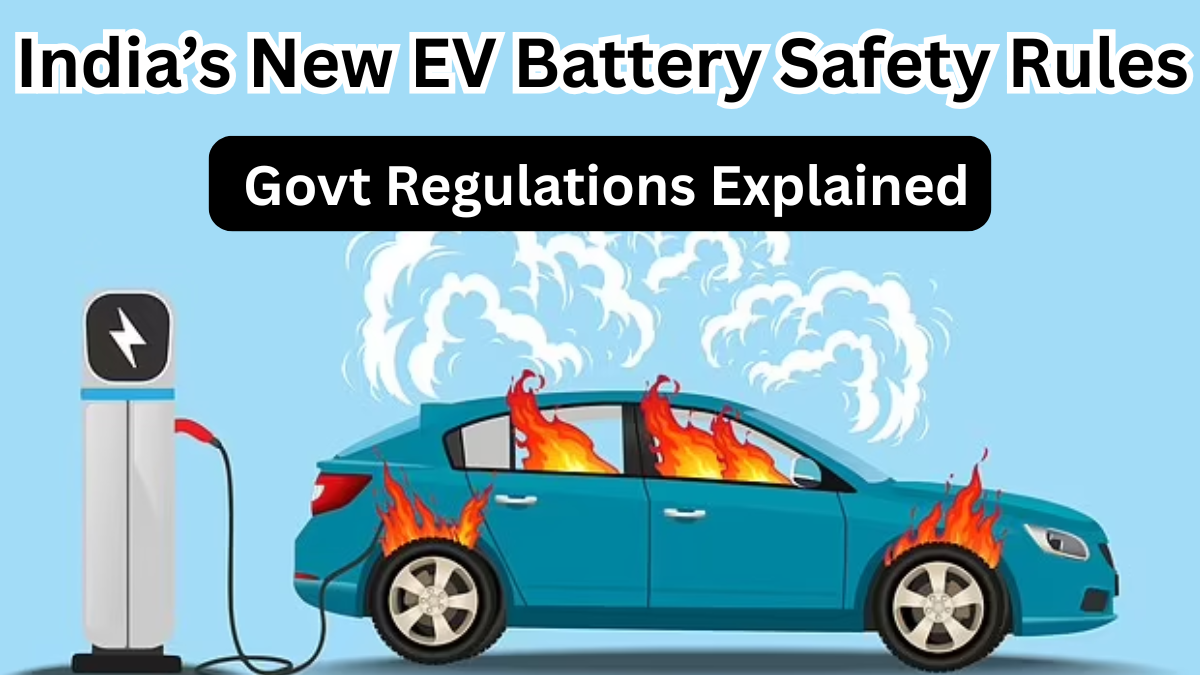As electric vehicles (EVs) continue to gain traction in India, safety has become a top priority for both manufacturers and the government. In response to growing concerns over battery-related incidents, the Indian government has introduced new EV battery safety norms set to take effect in 2025.
Let’s break down what these updated govt regulations mean for EV users, automakers, and the future of sustainable transport.

Why the New Rules Were Needed
The push for stricter EV battery safety norms began after a series of unfortunate incidents involving electric two-wheelers catching fire due to faulty battery packs or poor quality control.
Key reasons for updating the rules include:
-
Rising adoption of EVs across all vehicle segments
-
Fire hazards linked to battery overheating or short-circuiting
-
Lack of standardization in battery manufacturing and assembly
-
Growing demand for safer, more reliable EV infrastructure
What’s New in the 2025 EV Battery Safety Norms?
The 2025 govt regulations bring a host of changes designed to improve safety, accountability, and transparency in EV battery design, testing, and performance.
Key Changes at a Glance
| Feature/Requirement | Previous Norms | 2025 Updated Rules |
|---|---|---|
| Battery Design Testing | Basic certification | Mandatory AIS-156 and AIS-038 Rev 2 testing |
| Battery Management Systems (BMS) | Optional or limited standards | Mandatory smart BMS with thermal protection |
| Cell Quality & Traceability | Not always traceable | Must include QR codes for cell-level tracking |
| Battery Fire Response | No standard protocols | Mandated fire-resistant casing and cut-off |
| EV Battery Lifecycle Monitoring | Manual or semi-automated | Real-time monitoring through IoT integration |
Who Will Be Affected by These Rules?
These rules impact various stakeholders in the EV ecosystem:
-
Manufacturers must redesign batteries to comply with rigorous testing standards
-
Battery pack assemblers will need to upgrade their production lines
-
EV users can expect safer vehicles, although possibly at a higher initial cost
-
Government bodies will enhance oversight and enforcement mechanisms
How the Industry Is Responding
Automotive players and EV startups are largely welcoming the new govt regulations. Major companies like Tata Motors, Ola Electric, and Ather Energy have already begun aligning their future models with the updated safety framework.
Industry Highlights
-
Investment in AI-powered Battery Management Systems
-
Adoption of fire-retardant materials
-
Introduction of over-the-air (OTA) battery diagnostics
-
Increased collaboration with global tech partners
Benefits of the New Norms
The new EV battery safety norms aim to make electric mobility safer, more trustworthy, and scalable.
Key Benefits
-
Fewer fire-related accidents
-
Longer battery life and performance
-
Higher consumer confidence in EVs
-
Better insurance coverage for EV owners
-
Clear accountability for battery-related issues
Challenges in Implementation
While the intentions are solid, the new norms come with challenges:
-
Smaller startups may face cost burdens for compliance
-
Testing and certification capacity will need to expand rapidly
-
Rural and semi-urban assemblers might struggle with tech integration
Despite these hurdles, experts believe these govt regulations will ultimately create a more robust EV ecosystem in India.
FAQs
Q1: When will the new EV battery safety norms come into effect?
A: The updated norms are scheduled to be implemented across India starting March 2025.
Q2: Will these rules affect existing EVs on the road?
A: No, current EVs will not be recalled. However, manufacturers may offer software updates or voluntary safety enhancements.
Q3: What is AIS-156 and why is it important?
A: AIS-156 is a safety standard that governs the performance and construction of battery packs for electric vehicles. It ensures better thermal management and structural integrity.
Q4: Will EVs become more expensive due to these govt regulations?
A: Possibly, yes. Enhanced materials and testing requirements may increase production costs slightly, but they also provide better long-term value and safety.
Final Thoughts
India’s 2025 EV battery safety norms mark a significant leap toward making electric mobility safer and more reliable. While implementation may take time and investment, these govt regulations are essential for building a future-proof and fire-safe EV landscape.
As EV adoption grows, these rules will serve as the backbone of trust between manufacturers and the everyday commuter.
Click here to learn more
Pari is a passionate writer known for captivating stories that blend imagination and reality. Inspired by travel, history, and everyday moments, Pari crafts narratives that resonate deeply with readers.